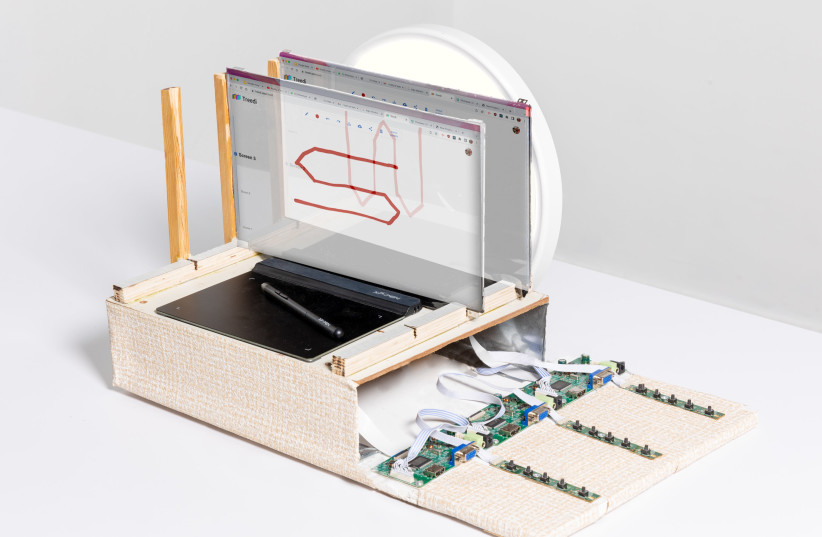There’s a big gap between having a great idea and making a business out of it. That gap has stood between countless entrepreneurs, and only the bravest among them have even tried to gather the strength of will to attempt the leap to the other side.
Johnathan Kobanni and Omri Chacham, two software engineering students from the Shenkar College of Engineering, Design and Art have developed Treedi, a multi-layered monitor and companion platform that could someday be implemented in military war rooms, designer studios and even home offices around the world. Having completed their proof of concept, the two are considering where next to take their invention in order to successfully traverse the aforementioned gap.
The technology itself has massive potential: by overlaying a series of transparent monitor screens, users would be able to visualize three-dimensional images, layer information, grant leveled access to classified information and many more functions that even the developers have yet to dream up.
In fact, a huge part of the process of finding applicable use-cases has come from the developers’ fellow students. Kobanni explained that the feedback gained from them was instrumental in the gradual development of the technology.
“In the beginning, we made the webclient, and that was it. At each stage of development, we showed the process to other students in Shenkar, [to gauge their interest] in the project,” said Kobanni. “We’d speak with them about things they would add or change, and then we’d develop it for the next [version]. So we definitely gained a lot from that.”

You’re at this stage where you’ve come up with your idea, you’ve proven that it works, and that it’s novel and unique. What next? Are you nervous? Scared?
Chacham: “I think that’s the question that every software engineer or developer asks: should I go my own way to achieve my dream and vision? Or should I just stay where I am? Johnathan is having a great time in the Navy, and I also really enjoy my job, so that’s a really tough question.
“I think that's the question that every software engineer or developer asks: should I go my own way to achieve my dream and vision?"
Omri Chacham
“We’re trying to speak to as many people as possible, and we really hope that one day we can do more stuff with it. If we have the opportunity to make it bigger to make it like our vision I can say for myself, I will definitely go with it. Because it’s really different, and when you do something like that in your life, you’ve got the best reason to wake up in the morning.”
Kobanni: “You know, it’s our baby. We developed it, we’re connected to this project. I can’t say that we really know what’s going to happen with it, but we really want to grow it and evolve it. If the right offer comes to us, then we’ll really do it. We won’t hesitate.”
Do you have doubts about what will happen if it doesn’t pan out?
Chacham: “We know that there are so many projects in the world that had such great ideas and such a great way of thinking, but they didn’t accomplish their dreams or visions. [With that in mind], we’re currently trying to do our best to make people aware of it and to show companies that may be interested in developing this kind of thing.
“But can we know what we’ll be doing in a year or two from now? I can’t be sure, but I really hope that I’ll be developing it with Johnathan. But as I said, it’s the toughest question for any developer, whether or not to take one of the biggest risks you can as a software engineer.”
